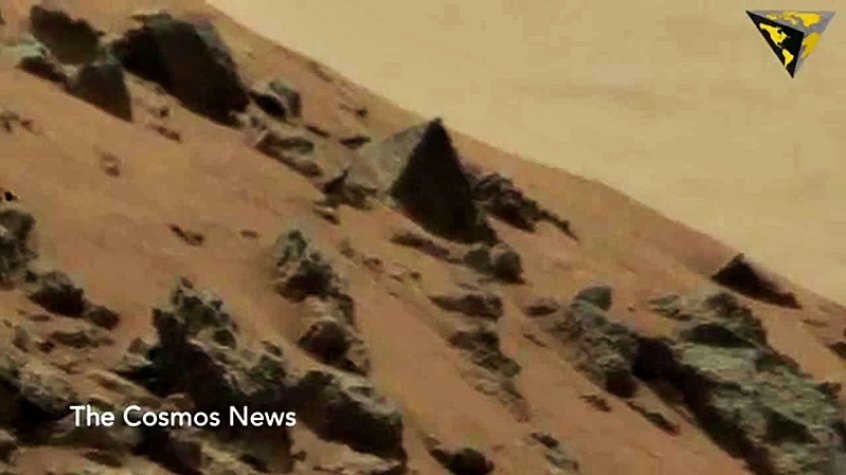
We know that there are ancient pyramids on Earth, but could these structures also exist on Mars? Enthusiasts of extraterrestrial life believe they do.
A video entitled "Pyramid Found on Mars" was uploaded last Saturday on the YouTube channel called Paranormal Crucible, believed to be maintained by alien enthusiasts.
The video points to a pyramid-like structure supposedly spotted by the Curiosity rover of the National Aeronautics and Space Administration (NASA).
The video describes the structure as a "remarkable artifact" with a "near perfect pyramid design." The makers of the video also suspect that the structure is either the capstone of a bigger pyramid, or a marker stone.
The video's uploaders also believe that the pyramid was a product of "intelligent design," and not just "a trick of light and shadow."
Does this prove that life existed on Mars, too? Professor Jim Bell of the Arizona State University, a member of NASA's Mars rover exploration team, does not think so.
Bell confirmed that image shown in the YouTube video was indeed taken by NASA's Curiosity rover last May 7. He, however, disputed the theory that it is a capstone or a pyramid, saying it is only a natural rock formation.
"The human eye is good at recognising familiar shapes or human features in random objects," Bell said.
The professor said similar pyramid-shaped rocks can be found in Iceland or Hawaii. Asked how the rock spotted on Mars could have an almost perfect pyramid shape, Bell said this was most likely caused by weathering, or hundreds of thousands of years of being smoothed by Nature.
Bell also recalled that in 2008, some people thought his team also captured a photograph of the Yeti on Mars.
"The picture looked like a mythical creature, but pictures from different angles show it's just a funny shaped rock," the professor said.













